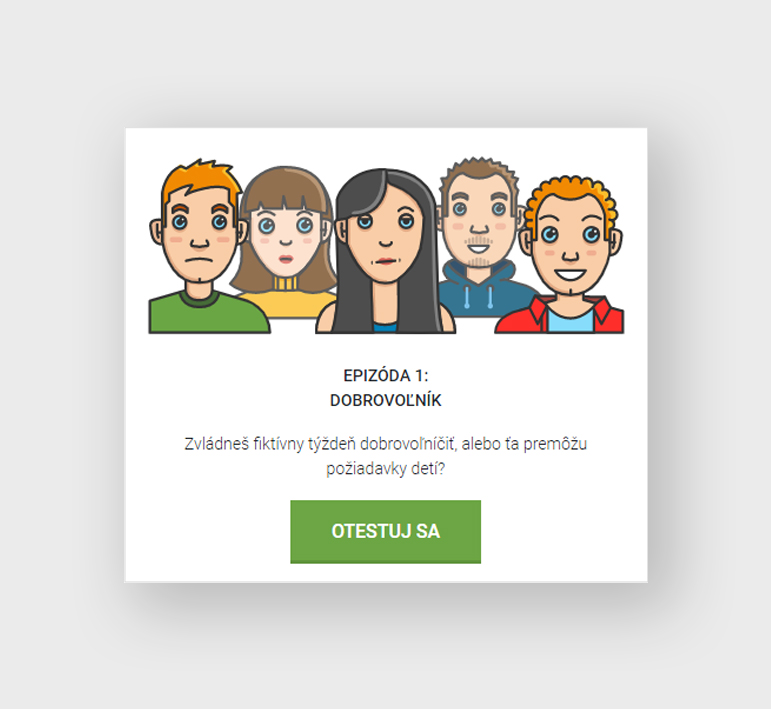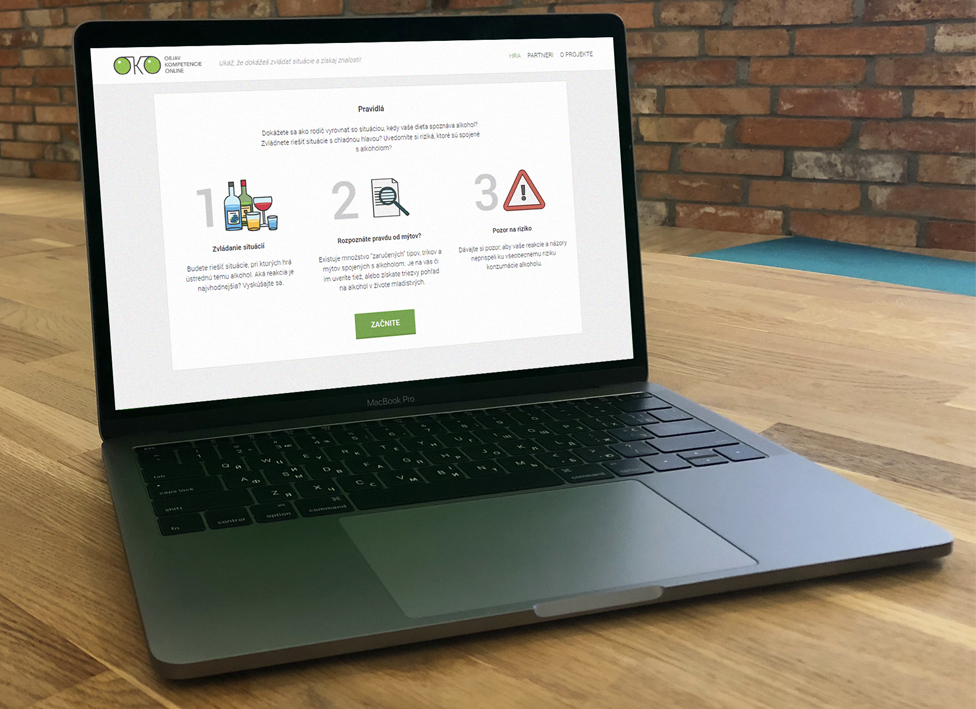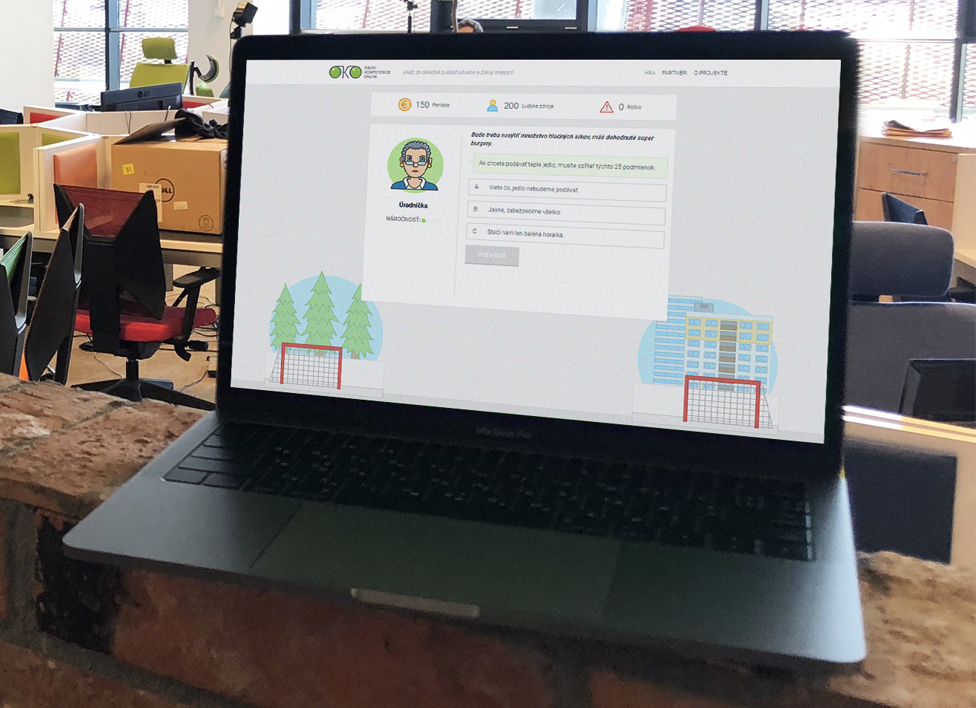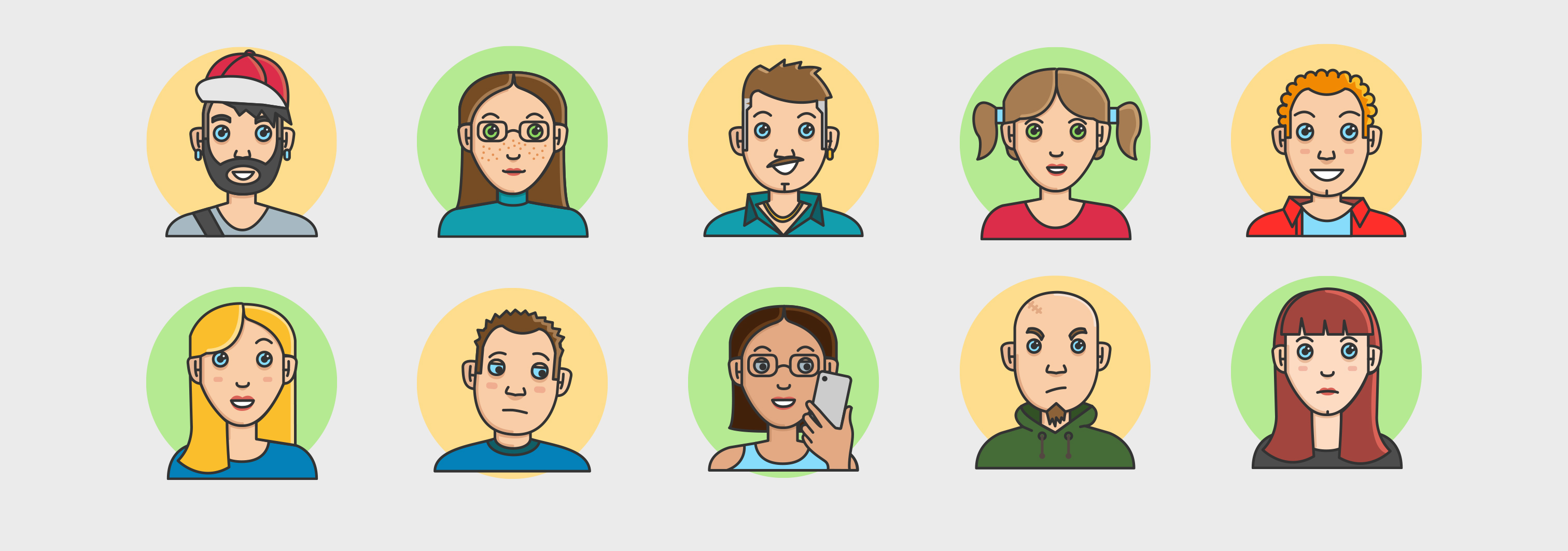They had to change their approach to attracting new volunteers. But how do you explain the routines, challenges and benefits in a short time? Enter gamification.
 Client
Client
A partnership of three NGO’s: KASPIAN, Slovak Scouts and INEX Slovakia. All of them are leaders in working with children and young adults in Slovakia.
 Starting point
Starting point
Volunteer work with kids is as demanding as it is rewarding. To make sure our future volunteers enter this field with a clear picture of what awaits them, we had to communicate what types of skills they need, what kinds of situations they will encounter and what skills and benefits they will get from the experience.
An internet campaign was chosen as the most efficient method of reaching a large number of people.
As we knew we’d have to compete with the entire internet for our target group’s attention, we had to create a call to action that would be irresistible.
 Gamified solution
Gamified solution
After many workshops with client experts, we came up with the idea of a role-playing game that would put players in the shoes of volunteers. Our idea was to simulate a one-week period as a volunteer, in which one would have to overcome various challenges presented to them by sweet, sometimes aggressive or deceptive and often crying kids. Your role is to try to solve as many of their demands as possible, but not to compromise your moral standards, or put yourself (or the kids!) at risk.
To raise the bar, there is a limited amount of time for each kid, in which you have to understand, analyze and decide what the best approach is.

Quick gameplay that provides you with a comprehensive understanding
Each kid represents a real situation, that you, as a volunteer, will face.
During the game, players put themselves in the shoes of volunteers and experience a wide variety of challenges that await them. Thanks to that, they have a much better understanding of the job. During the game, players are approached by several figures, that represent, for instance, the Labor Market. These figures point out how volunteering can be beneficial for their professional development.
At the end of the game, players can see a list of unlocked competences that were tested during the game. It provides a quick overview of the skills needed for the job and a player’s strengths and weaknesses.
Content and game mechanics based on real experience
In the game, scenarios were created based on the real experiences of partners, volunteers and experts. To spice it up a bit and add a little pressure, a limited amount of time was allotted, which is something often present in real life situations.
 The main tools we used
The main tools we used
-
Role play
Through being immersed into the role of a volunteer, players have a better chance to understand the feelings and the variety of emotions one must face when working with kids.
-
Time pressure
We wanted to provide a simulation that would be true to real life scenarios. Adding time pressure reflects the fact that volunteers have to decide within seconds in real life as well.
-
Challenge and exploration
Our call to action was “Do you have what it takes to survive as volunteer? Find out in our 7-minute game”. We wanted our players to challenge themselves and explore their own competences.
 Results
Results
-
More than 1,000 relevant emails were acquired through an endgame follow-up form.
-
Partners can now target and work with an audience that has a much better understanding of what it takes to work as a volunteer with kids.
-
The success of the initial campaign led to creating an additional episode of the game, this time focused on the work of a project coordinator — a logical career step for more experienced volunteers.





